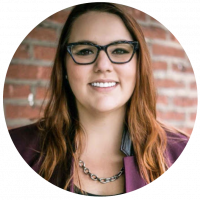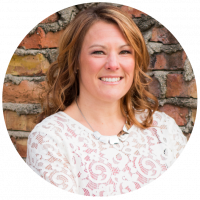
As part of the Collaboratory 2021 Summit, senior leaders at four Collaboratory campuses shared their experiences and discussed the importance of community engagement data to fuel campus and community success. You can watch a recording of the panel discussion and their responses are detailed, below.
Dr. Kristin Norris:
Our approach to community engagement has been “let a thousand flowers bloom” and the institution would provide fertilizer and things to help grow beautiful flowers [faculty]. Over time, we now have a very large garden full of beautiful colors, varieties, etc. The challenge with this evolution is that plants may start overtaking others, some are dying without adequate weeding or nourishment. In short, our approach from the beginning lacked alignment and a strategy. Data collection and management has grown and evolved alongside the now expansive garden. The most beautiful gardens have a strategic vision in community engagement work that organizes the annual flowers from the wildflowers, which enables one to identify the gaps or strengths from which to build upon. And ultimately, a pamphlet that helps visitors [community, internal decision-makers] ‘see’ the garden for all it has to offer and how to navigate it efficiently.
Dr. Elizabeth Parmelee:
To build off of Dr. Norris’s analogy, I would add that a motivating factor in Metropolitan State’s use of Collaboratory is to document the types of plants in the garden and to connect like plants to each other, or more specifically to answer the question: How does what we are doing across campus connect with each other and how do we tell the complicated, yet amazing story? At our institution, the goal to serve populations previously not well-served by higher education in the state of Colorado has always been a priority. Our institution was created to be “Of the city, for the city, part of the city,”. And now we must document that work.
Dr. Jess Mann:
Continuing to add to the metaphor, I would describe our previous data tracking was like an unruly garden, with people across campus using different language and definitions. Given our context as a Catholic Spiritan university, as a service and mission-driven institution, community engagement exists as a priority, but when deciding to move away from a specific service learning requirement we still wanted to ensure good stewardship of resources and celebrate successes in the area. Strategizing around this and leveraging data allows us to differentiate ourselves among a variety of institutions in the Pittsburgh area and to share our unique community impact.
Dr. Howard Rosing:
In a similar institutional setting, we at DePaul University would agree that there is a need to celebrate the breadth and depth of work occurring throughout our campus. We as an institution must know ourselves and our work. And there are limitations to only having one person in one office capture and know that data. At DePaul we are able to leverage Collaboratory as a way to better know ourselves, especially in light of additional internal and external pressures and goals surrounding the advancement of social justice, advocacy, and racial equity work.
Felice Nudelman:
I appreciate Dr. Rosing’s note about the importance of institutions “to know themselves and their faculty, staff and students in order to better partner with our communities,”. We should strategically position Collaboratory to do just that.
Dr. Mann:
We need to move beyond anecdotes and make tracking data easier. For our specific campus, this need coincided with a new strategic plan that included a community engagement focus to which I asked administration, “How will that goal be measured, if not Collaboratory, how will that work be done?” Here at Duquesne, Collaboratory started as a mode for assessment in one office, but has grown exponentially, in terms of persons served by that data. For example, faculty promotion and tenure began incorporating community engagement, funders and foundations were looking for “sustained initiatives,” not to mention the creation of their campus’s new medical school, with it’s DO designation, requiring that community-based work be built into the curriculum. The prioritization of collecting community engagement data also allows us to more easily and robustly highlight health equity work and allows for recruitment of diverse faculty, staff, and students.
Dr. Parmelee:
We had initial support of the university president and provost, and just like Duquesne, civic engagement is part of our campus’s new strategic plan. Additionally, we wanted to apply for the Carnegie Classification and needed data for that process. An example of the data that we are looking to answer with Collaboratory is what is happening in Denver Public Schools aside from the teacher preparation program. Our internal and external stakeholders need to know!
Dr. Rosing
At DePaul, we are asking the same types of questions as Dr. Parmalee mentioned with K-12 partnerships, but beyond schools, stakeholders are also asking what organizations are we working with that are working on criminal justice issues, restorative justice, and police reform. Not only are the questions being asked, but these are often being asked by people who want to do more work in these areas. So, I am left with the need to have a repository of information from which people can learn to do better work in the community and better connect those who are doing the work. The need to leverage specific data in this way has become increasingly apparent.
Dr. Norris:
COVID-19 meant opportunities at the state and federal level for funding. But you had to be quick, which meant that institutions and organizations that have been strategic and have the data are the ones who benefit most. Additionally, in light of our new university president, stories will not necessarily carry over from one person to the next. The new leader may not know the right office to ask specific questions of, and therefore, access to data becomes critical to their success. Lastly, while we aren’t there yet, supporting engaged faculty through promotion and tenure requires new metrics for evaluating the work (beyond journal impact factors). Building and sustaining partnerships is not a criteria for evaluating faculty contributions to the discipline…at least not at my institution.
Felice Nudelman:
From our position at AASCU, we see an increased desire from various stakeholders, specifically higher ed leadership and policy makers, for data to help move our work forward, to assist in policy analysis, to tell institutional stories, and cross partisan lines, all while building relationships, community progress, and collaborative work.
Dr. Parmelee
Given that we are in the early stages of Collaboratory implementation, I hope to build on a pattern that certain community partners have multiple activities connected to them, and to strategically connect people on campus that are working with the same partner. This would allow folks to have conversations about what their partnerships look like and how partnerships are deepened and sustained over time. I also hope to identify gaps within this work.
Dr. Norris:
At our institutions justice work will only continue to be prioritized. Given where we are with race relations in America, and given the layers to how faculty and staff work with external partners, there is a deep need to rethink how we engage with our communities. Prior to Collaboratory, we were not asking faculty for in-depth information about their specific partnerships. Never once did we ask faculty to name the human being, or the population, or the neighborhood they were working with. In fact, we probably emphasized quantity (more community partners = good) over quality. We had to reflect on years of data that was not captured fully. We need to do better as an institutions. Recently, IUPUI updated its promotion and tenure guidelines to reflect and value DEI work, which will likely require documentation and assessment beyond traditional metrics.
Dr. Mann:
We need long-standing projects with community to be sustainable, recognizing that without data and evaluation, these stories and projects seemed auxiliary, and not as intentional at Duquesne. The sense of urgency to change this increased, in particular, when these projects could be threatened with pandemic-related budget cuts. Additionally, local legislators began holding us more accountable for justice and health equity work, which led to an institutional, top down call for folks to upload activities into Collaboratory so we can better understand our partnerships.
Dr. Rosing:
With a culture of people already doing engagement work here, many faculty have chosen to work at DePaul because of our mission, because we do this work. However, I’ve realized that our office didn’t necessarily have the resources to support that level of work – which is a good challenge to have on a campus! And now, with racial equity more at the forefront of our work, we need to ask: How do we use data to address and assess the work of that movement, and other movements? And, beyond Collaboratory, what information does our institution still need to know and measure about movement-based work?
Felice Nudelman:
There is a confluence of rivers coming together in higher education – and as administrators we often find ourselves asking how will we rise to respond and manage the challenges we face?” In reflecting on a previous job, I heard the sentiment that information is power to be shared, but beyond that information helps to create intentionality. This intentional work can truly lead to societal change, to helping put our students on a path that moves beyond where our current landscape is, beyond the vitriol, beyond the polarization, beyond the hatred.
Dr. Norris
Now that we have somewhat robust information, people come to us. Getting here took intentional outreach and strategic alignment. Data should be entered into Collaboratory with other pieces of information in mind. For example, building upon data from our partner high schools, Indiana University works with other internal and external partners (like Enrollment Management) to find the other relevant data to really fully tell the story of what IU’s engagement looks like with K-12 schools (such as high school graduation rates, percentage of students filling out FAFSA) in an effort to find any gaps in serving schools that are perhaps higher risk. We need to be asking where we invest our faculty and staff’s time and expertise in community, why we invest, and how they are intentionally serving their community, as they apply for funding opportunities.
Dr. Mann:
Duquesne rethought the type of common learning experiences, outcomes, skill sets, and core competencies that students should have crossing the graduation stage. We recognized that community engagement kept popping up as core to these outcomes and experiences. And we leverage Collaboratory within a central location, to map the whole campus’ engagement and embed community engagement throughout the newly identified student core and competency areas.
Dr. Parmelee:
We had some concerns about the dissemination of information, both on the faculty and community partner end. We received a lot of questions like, Where are you going to share this data? And, beyond that, there was the concern that by widely publishing partners, it might open those to risk; so, then it becomes our institutional responsibility to ensure ethical partnerships.
Dr. Rosing:
I agree that there can be the concern about public facing information. And it can extend even beyond highlighting community partners to faculty research. More specifically in our context, there can be faculty competition within the Chicago environment for potentially working with the same partners. However, we need to educate those within our institution on the value of sharing information and partners beyond our campus in order to work together in a more collaborative way, as institutions in the same city. And, part of this is the strategic approach within our institution and should include institutions across our greater Chicago area who are often serving and working with the same communities.
Dr. Mann:
With the priority our administration placed on entering activities into Collaboratory and providing specific incentives for those that do, faculty and staff have begun to see their colleagues’ data included in Collaboratory and so they also wanted to be included and have their partnerships highlighted. Beyond that, we are noticing that many folks would see what their peers were doing as service and engagement and realize “Oh we do that too!”. And they always have, but their work previously wasn’t considered engagement. So we are now more prepared to welcome them to the conversation. Community partners would also see the data of what other partners were doing with the campus, which could broaden their own project asks and collaboration moving forward. Sharing data back with our internal and external stakeholders allowed for people to see themselves within the work; expanding the notion of what this work is on both the faculty and partner sides.
Dr. Rosing:
Because of the public nature of the data we recently saw the creation of a new academic program that is working to integrate existing partner relationships identified in Collaboratory into their new curriculum.
Dr. Norris:
Some of the IU campuses have implemented a Partners In-Conversation model, involving campus deans and other faculty, staff, and community partners to have deeper conversations. Other campuses have asked stakeholders what data they need and how we could help provide it, leading to additional conversations. Populating it with data, analyzing it, sharing it – it’s a constant cycle of evaluation and assessment and conversation between these stakeholders which is a very different approach than annual reporting.
Dr. Rosing:
One should first understand how and why their institution wants to collect data. We realized that previously we didn’t really ask those stakeholders questions about how they might use their data, beyond just an office of community engagement context. Similarly, we should ask our community partners how they might benefit from having access to this data.
Dr. Mann
I recommend having a sense of humility about the process. It might be easy to see the potential and be excited, but it takes work and patience to get folks excited, too. The Community Engagement Office has had to position ourselves more as a resource. We have had to make ourselves entirely relevant to each individual stakeholder group that we are speaking to. Following Dr. Rosing’s point about asking questions prior to reaching out to stakeholders, I recommend not just sending mass emails. Individual context is so important. And, lastly, I encourage others to intentionally choose and value early adopters and methodically communicate the benefits they can derive by entering and using this data as part of a broader implementation strategy.
Dr. Norris:
Beyond strategy, this work is all about shifting culture. We often have to help people think about their engagement work differently. It’s important to build relationships and trust and then mention data collection and Collaboratory. The goal is to learn about their work and engagement. Then, how documenting their engagement can be beneficial.
Dr. Parmelee:
I recommend having additional support for this work. I was very thankful to be able to hire a great student worker. This student enjoys making natural connections from one activity to another, from one faculty’s work to another and can communicate information with enthusiasm. This provides an added benefit of not always needing me, an Associate Vice President, in the room, which sometimes helps with faculty buy-in.
Meet Your Panelists:

Jessica Mann, Ph.D. is the Assistant Vice President of Community Engagement at Duquesne University. She has extensive experience with developing, implementing, and evaluating service-learning and community engagement programming in both the academic and co-curricular realms. Jess’s career and research has focused on exploring the ways in which institution’s programs, policies, and procedures respond to their larger civic and social responsibilities.

Kristin Norris, Ph.D. is the Associate Director, Office of School Partnerships within the Indiana University System. Kristin works with internal and external stakeholders to track community-engaged activities to conduct assessment, evaluation, and research that transforms higher education and demonstrates how IU’s community engaged activities (e.g., programs, pedagogies, research, initiatives) that support the institutional mission and inform decision making.

Elizabeth Parmelee, Ph.D. is the Associate Vice President of Undergraduate Studies at Metropolitan State University of Denver, charged with advancing civic engagement and the university’s anchor mission as well as overseeing academic programs that reach beyond the disciplines. Prior to assuming her current role, she worked with students developing unique cross-disciplinary degree programs. She holds a PhD in International Studies. She has taught economics and international relations, and has worked with universities and public school districts to enhance education at all levels.

Howard Rosing, Ph.D. is the Executive Director of the Steans Center at DePaul University. He oversees the work of Academic Service Learning and the Egan Office for Urban Education and Community Partnerships and supports the Asset-Based Community Development Institute. He works with faculty to develop scholarship on service-learning and community-based research and serves as a faculty member in Community Service Studies and an affiliate faculty member in Geography, Sustainable Urban Development (MASUD) and Community Psychology
Meet Your Moderator:

Felice Nudelman is the Associate Vice President for Academic Innovation Transformation at American State Colleges and Universities (AASCU). Nudelman originally came to AASCU in January 2019 as the executive director of the American Democracy Project (ADP), a program she helped create, which supports member campuses in programming to encourage students to be informed, engaged citizens for our democracy. Previously, Nudelman served as the executive vice president of the Weiss Institute/Say Yes to Education. She also served as the chancellor of Antioch University.
